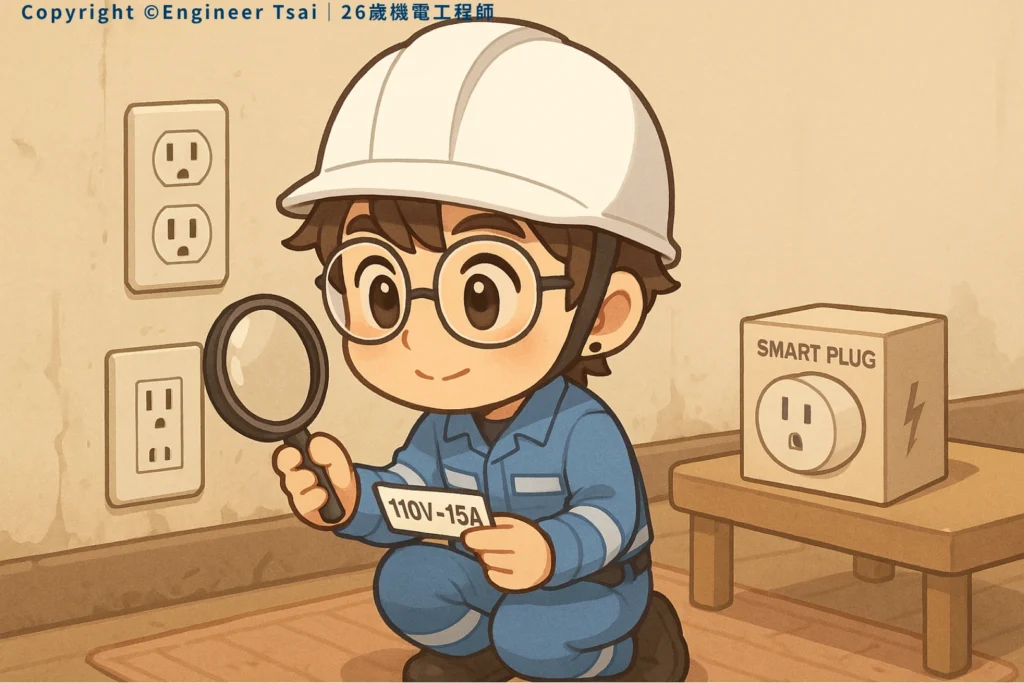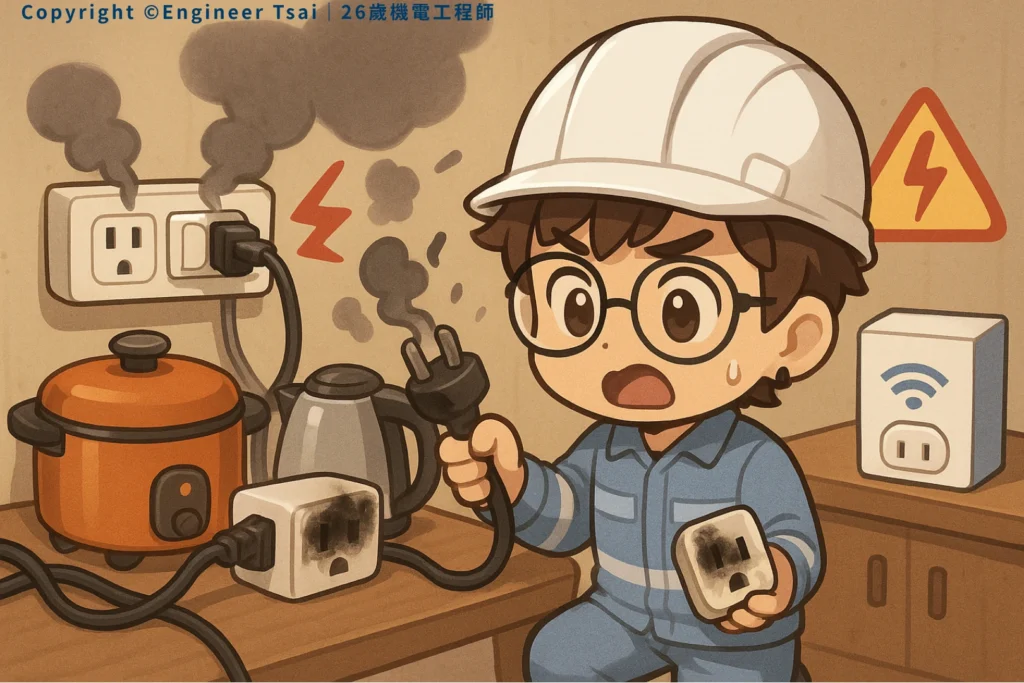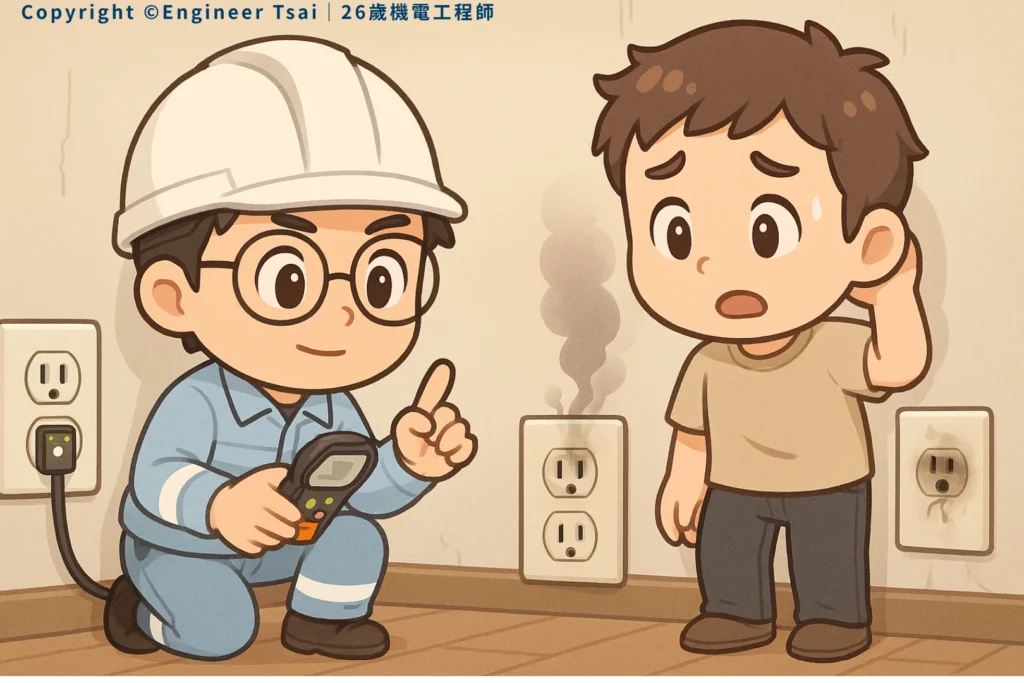Ever think about upgrading your home with smart outlets? I mean, they sound awesome—just plug one in and you can control your lights or appliances from anywhere on your phone. Super convenient, super modern, right?
But if you’ve ever checked out online reviews or DIY forums, you’ve probably seen a bunch of disaster stories:
“Just installed and it fried!”
“Plugged in something big, and the power tripped!”
“Loaded up a power strip, and the whole thing went dead!”
Here’s the thing—most of these headaches aren’t because smart outlets aren’t smart enough. It’s because people trust the fancy features but totally ignore the basics of how electricity works.
Bottom line:
“No matter how high-tech your gear is, if you don’t get the fundamentals of electricity, using smart plugs is just rolling the dice with your home.”

1. Is Your Home’s Wiring Ready for Smart Living?
A lot of older homes in the US still have skinny wires and two-prong outlets—stuff that was installed decades ago and just left alone. Here’s something most people don’t realize:
Every wire and every outlet in your home has a limit—a maximum current (amps) and a maximum voltage.
Big takeaway:
- The amp rating on a wire or outlet is like the speed limit on a highway. Push too many “cars” (aka amps) through and you’ll get a traffic jam—or worse, the road (your wire) could literally burn up.
- When a smart plug says “15A” or “16A” on the package, that’s its absolute max. It doesn’t mean you can go wild and plug in everything at once. For safety, always stay well below that number.
- Most American homes run on 120V, but if you buy a smart plug from overseas that’s rated for 220V, or plug it into the wrong kind of outlet, there’s a big chance you’ll fry it (or worse).
Pro tip:
Before you upgrade to smart plugs, check the ratings on your outlets and wires. If you’re not sure, ask a licensed electrician—don’t just assume “it’ll probably be fine!”
2. Overload Protection Isn’t a Magic Shield
A lot of folks buy smart plugs just because they see “overload protection” on the box and think it’ll save them from anything. But let’s be real—overload protection is only your last line of defense.
It’s like wearing a seatbelt: it helps if something goes wrong, but the best move is to drive safe and avoid the crash in the first place.
Real-life scenario:
One reader told us they plugged a rice cooker, an induction cooktop, and an electric kettle all into the same power strip—at the same time. Not only did the breaker trip, the extension cord actually started smoking.
Here’s the deal:
Even if a product says it has overload protection, it’s not meant to be tested over and over. Repeated overloads can wear out the safety feature—or it might not act fast enough.
Key takeaway:
“Electrical safety isn’t about letting your smart plug cover your mistakes. It’s about understanding your home’s total power use before you even plug things in.”
Action step:
Add up the wattage (W) for every device you plan to use on the same plug or outlet. If you’re not sure, split them up or use a different outlet. Don’t overload one smart plug or power strip—play it safe!

3. “Grounded” Isn’t Just a Buzzword—Is Your Home Actually Safe?
You’ve probably noticed that most higher-end smart plugs in the US brag about “three-prong with ground” or “built-in surge protection.” But here’s something most people never check:
Does your wall outlet actually have a real ground wire connected behind it?
Reality check:
A ton of older homes still have old-school two-prong outlets, with zero grounding. Sometimes, people try to “upgrade” by swapping out for a three-prong outlet but skip adding the real ground wire. Some will even fake it by running a random copper wire somewhere—which can actually make things more dangerous, not safer.
Surge protection and GFCI (ground-fault circuit interrupter) features mean nothing if your wiring behind the wall isn’t up to code.
Key takeaway:
“Home electrical safety isn’t about what features your outlet advertises—it’s about every wire and every outlet being properly grounded and installed.”
Tool tip:
You can pick up a simple outlet tester at any hardware store (usually for under $10). Plug it in, and the lights will tell you instantly if your outlet is truly grounded. Super easy, super important.
4. Real-World Lessons: Don’t Use Smart Plugs to “Test” Old Wiring
I’ve seen my share of “DIY gone wrong” on job sites. Sometimes, folks want to save money and swap out their own outlets, or upgrade to smart plugs for their new washer and dryer.
One homeowner was so pumped to control their new dryer remotely. But just a month later, the smart plug’s plastic case was scorched, and we had to rewire a whole section of the house.
Lessons from mistakes:
- Most common DIY fails: miswired outlets, loose screws, or missing ground connections.
- Lots of imported smart plugs are made for totally different electrical standards—plugging them in can cause smoke (or worse, a fire).
Core insight:
“Don’t let a new feature put your decades-old wiring to the test. Upgrade your wiring first, then enjoy all the smart tech you want.”

Final Thoughts: Real Smart Living Starts With Knowing Your Power
Don’t get swept away by flashy marketing—knowing a little electrical basics is the real way to make your smart home safer and more reliable for the long run.
Before your next smart plug upgrade, keep these tips in mind—so you, your family, and your gadgets can all stay safe!
Have you ever had a smart plug fail, burn out, or go wrong with a DIY install?
Share your story in the comments, or send this article to a friend thinking about upgrading their home—let’s help everyone avoid those “rookie mistakes” together!
📌 Further Reading
Curious about making your home safer, more efficient, or just want to know how all this stuff actually works? Don’t miss these must-read guides:
🔹 Common Multimeter Mistakes and How to Avoid Them
A multimeter is a must-have for every homeowner and DIYer. Learn how to check outlets, appliances, and wiring before problems strike.
🔹 Short Circuit: What It Is and How to Prevent It
Most home electrical scares start with a small short circuit. Learn the real causes, how to prevent them, and what to do if it happens.
🔹 How Many Devices Can You Safely Plug Into an Outlet? (Coming soon!)
Not sure how much your extension cord can handle? This guide breaks down the math and safety tips so you’ll never overload again.


